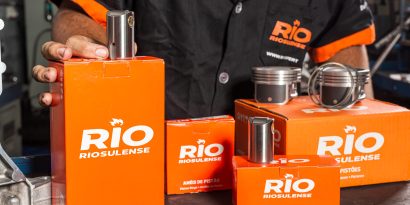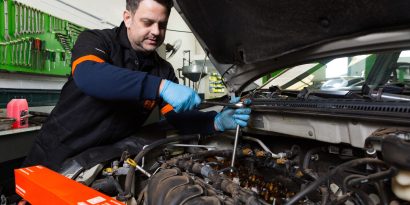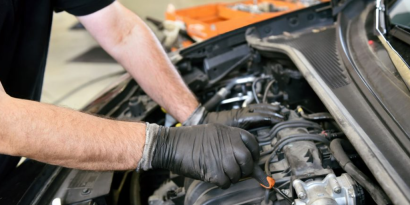The future of automobiles is a matter of public domain. We all know that vehicles will become increasingly connected, intelligent and autonomous, in addition to being equipped with the most diverse tools in order to simplify the users’ routine. However, little is discussed about technologies for the automotive sector in the industrial sector, which is the real basis of all this transformation.
This is because while electric, hybrid and autonomous cars are extremely interesting and exciting topics, not everyone remembers that this type of innovation also requires a vast scientific and industrial counterpart – bodies must be optimized, engine blocks need to be lighter and casting processes demand more and more efficiency.
The good news is that the large foundries and metallurgical companies have been investing heavily in the development of cutting-edge solutions for this market. Optimized casting, special alloys and smart metals are already in the sights of research centers around the world and promise to dominate the original parts (OEM) market, revolutionizing the sector in the coming years. So, how about checking out some of these trends?
Lightness: the basis of new technologies for automotive casting
With the introduction of stricter laws around the world to reduce the emission of polluting gases, automakers began the process of developing lighter vehicles, which consume less fuel and therefore pollute less. And there are already some cases of success in this regard.
To give you an idea, a Land Rover that weighed about 3,100 kg in 2010 and produced 327 grams of CO² for every 100 km traveled, currently weighs 2,200 kg and produces 194 grams of CO² for every 100 km traveled. In more direct numbers, we are talking about a 29% reduction in weight and almost 41% in the emission of pollutants.
Given this scenario, it is natural that the search for lighter materials will increase and, in the sights of large foundries, special alloys are already present in several components. This is because the preparation and casting process allows the creation of a lighter and even more durable raw material than iron and steel, elements that are ubiquitous among auto parts. That is why, even, that its use in the automotive sector has grown exponentially in recent years.
On-demand additive manufacturing takes on a new lease of life
And as everything indicates that lighter metals will be the protagonists of this new era of metallurgy, it is natural that innovative production engineering techniques that take into account the mechanical characteristics of the final product and also the manufacturing costs are constantly developing. Among them, the development of cheaper prototypes and with less “time to market” has been gaining more and more space, especially with the implementation of additive manufacturing.
This is because, unlike what happens in the more traditional molding and casting process, parts with complex geometries can be prototyped and tested in a state very similar to that of their final shape with 3D printing, which contributes to efficiency and agility in the adjustment and adaptation processes.
Apparently, this technique will not take long to leave the foundries and metallurgical companies to invade the production line of the automakers themselves, being used even in the manufacture of more robust components and unique parts, such as engine blocks and mechanical transmission elements.
In other words, this means that additive manufacturing has been increasingly used for generating practically finished products, requiring very little machining work, which implies in reducing material losses and shorter casting times than other processes, factors that positively impact manufacturing costs.
Trends to keep an eye on the industry
In addition to these technologies that are helping to transform the automotive sector, it is also important to keep an eye on novelties and processes that, although still in their infancy, promise a much more dynamic and sustainable future when it comes to the automotive industry – and the entire supply chain.
And it is no secret that most metallic materials are produced through smelting, which applies a large amount of energy to the ore to melt it and give rise to the metal in question. As dictated by the legislation, until high degrees of purity are reached, the material must go through several refinement processes, which despite guaranteeing the ideal lightness, end up raising its final price.
The problem is that, during this process, there is the elimination of several gases that contribute to the greenhouse effect, even though many companies do not measure efforts to guarantee their environmental counterpart. But … what if there was a process that would dispense with the high energy costs of a casting, would not produce greenhouse gases and in a single step transform the mineral raw material into high-purity metal?
This is where electrolysis comes in. After scientists at the Massachusetts Institute of Technology (MIT) discovered that this process is capable of separating and purifying metals in a much cleaner and cheaper way, many startups and innovation centers began to study its applicability in the casting of spare parts. .
Basically, the idea is that the minerals go through the electrolysis casting process so that the released gases remain extremely pure and are grouped on the surface of the metals at the end of the process. Thus, these gases can be easily collected and reused for other industrial purposes.
In addition, it is estimated that electrolysis can guarantee the obtaining of metals through a single, continuous and more compact process, allowing smaller and cheaper metallurgical plants to be built to meet great demands, resulting in considerable environmental gains! Maybe it’s a good bet to keep an eye on the horizon, isn’t it?
Magnesium within the reach of the automobile industry
Another of the technologies for automotive casting that has recently aroused the interest of this industry is the application of super light magnesium alloys in vehicles. Developed by Australian engineers from the Commonwealth Scientific and Industrial Research Organization (CSIRO) , this process is capable of generating products cast in very high integrity magnesium alloys from permanent molds.
Here, we are talking about magnesium blocks for engines that are up to 30% lighter than aluminum blocks and with only one third of the weight of a cast iron block, for example. Such significant gains are already drawing the attention of several car manufacturers, who are analyzing the technology.
In partnership with major automakers, these researchers built a pilot plant for the production of magnesium castings and the portfolio already has wheels for cars and engine blocks for 750-cylinder motorcycles, cooled with water.
And from an operational and economic point of view, the use of permanent molds is a real hand on the wheel for metallurgical companies, since this casting process requires neither high pressure nor vacuum. In it, the mold fills slowly from bottom to top, minimizing air trapping and oxidation, producing defect-free parts and decreasing material loss along the melt.
Here at RIO , we like to anticipate the future and we are always looking for new smart and practical solutions for application in the original automotive parts market. That is why we constantly invest in research and development, everything to make our process even more precise and agile. Get in touch with our team, talk to our experts and get to know our state-of-the-art solutions and technologies!





